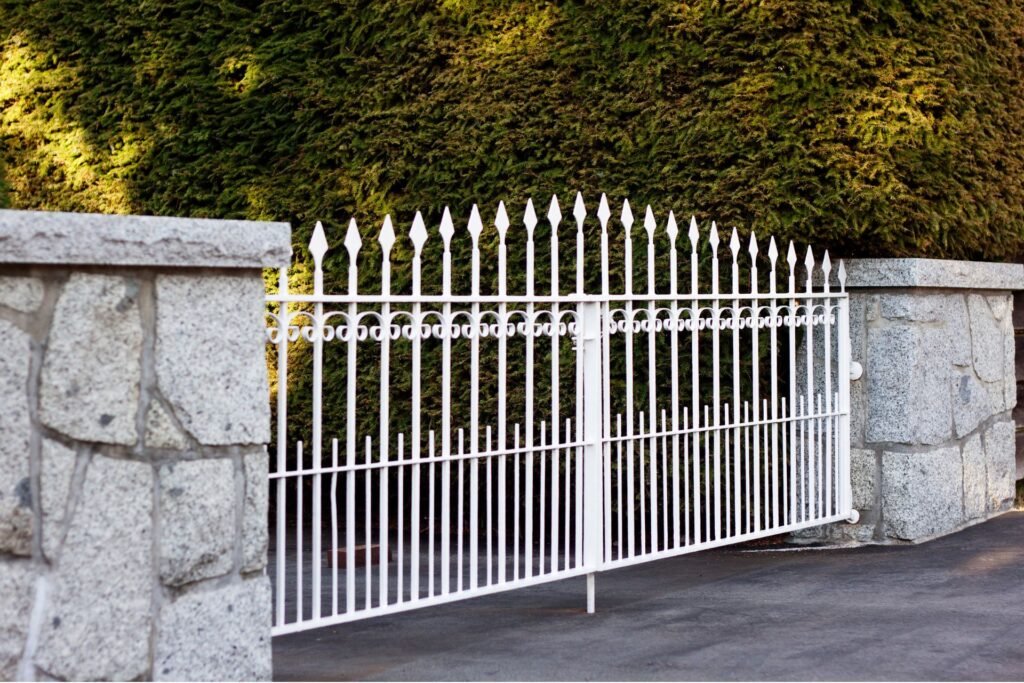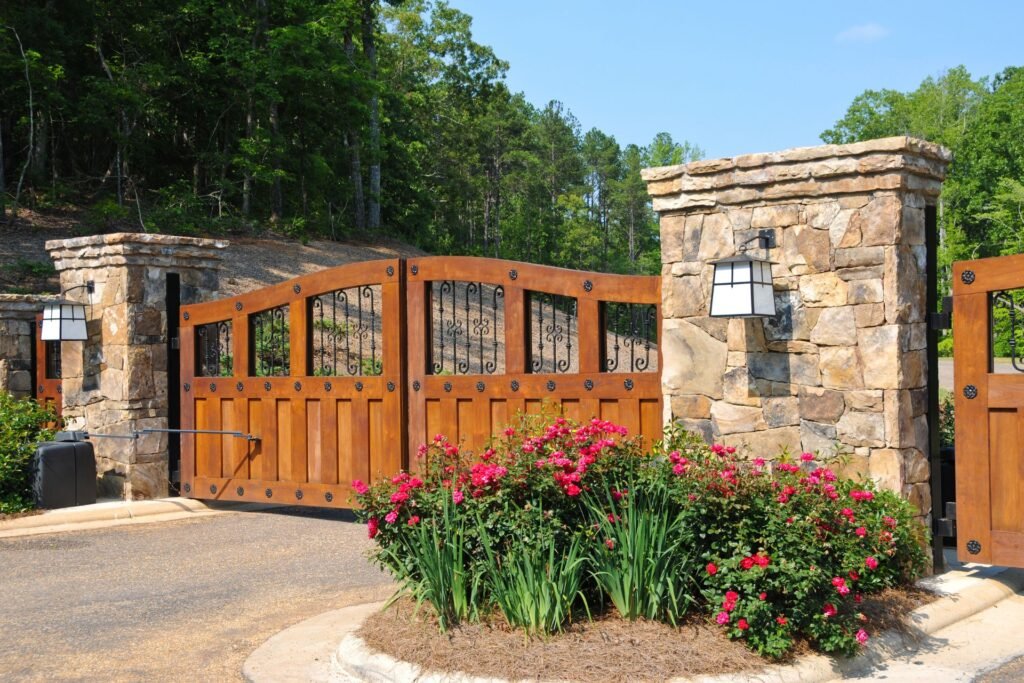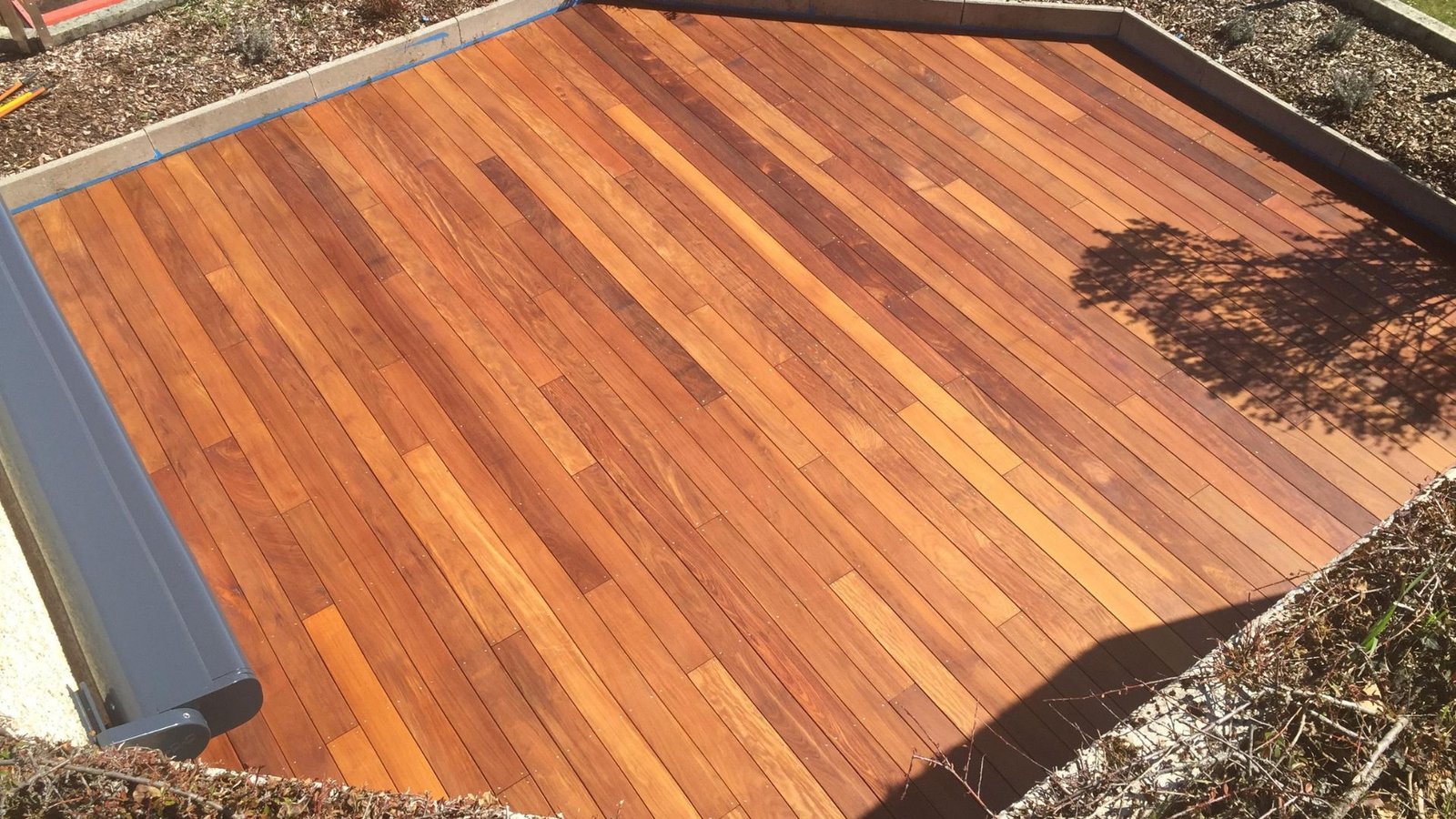Welcome to our comprehensive guide on the guidelines for building fences on shared driveways in New Zealand. Navigating the complexities of shared driveways can be challenging, especially when it comes to establishing clear boundaries and ensuring harmony with your neighbors. In this blog post, we will delve into the essential legal requirements, practical steps, and best practices for constructing a fence on a shared driveway. Whether you’re looking to enhance privacy, security, or simply define property lines, understanding these guidelines is crucial to avoid potential disputes and ensure compliance with New Zealand’s regulations. Read on to discover everything you need to know to successfully plan and build your fence while maintaining good neighborly relations.
Building fences on shared driveways in New Zealand requires adherence to specific guidelines. Key steps include understanding local council regulations, consulting with neighbors, accurately determining property lines through surveying, and obtaining necessary permissions. It’s essential to comply with the NZ Building Code and consider boundary and easement implications. Whether hiring a professional or opting for a DIY approach, following these guidelines ensures legal compliance and helps maintain good neighborly relations.
Table of Contents
Understanding Shared Driveways
Definition and Common Scenarios
What is a shared driveway?
A shared driveway is a single driveway that provides access to two or more separate properties. This setup is commonly found in residential areas where space is limited, and it allows multiple homeowners to use the same path to reach their garages or parking spaces. Shared driveways are practical solutions that maximize space and minimize costs associated with constructing individual driveways for each property.
Common situations where shared driveways are found
Shared driveways are prevalent in several types of residential settings:
- Townhouses: In townhouse complexes, homes are built close together, often sharing walls. A shared driveway in these complexes reduces the need for multiple access points, thus saving space and costs.
- Semi-detached homes: These homes share one common wall and often a driveway. This arrangement is efficient for both land use and infrastructure.
- Apartment buildings: In multi-unit residential buildings, a shared driveway can provide access to a common parking area, which is used by all residents.
- Urban infill developments: In densely populated urban areas, new homes are often built on smaller plots of land. Shared driveways allow for efficient use of limited space without sacrificing access to each property.
Legal Implications
Overview of property rights and responsibilities
When it comes to shared driveways, understanding property rights and responsibilities is crucial. Each homeowner with access to the shared driveway typically holds an easement, which is a legal right to use the driveway. This easement is often documented in the property’s title deeds, specifying the terms of use and maintenance obligations.
Homeowners using a shared driveway must collaborate on its upkeep and repair. Responsibilities might include:
- Maintenance: Regular upkeep such as snow removal, cleaning, and minor repairs.
- Repairs: Addressing wear and tear or damage, with costs typically shared among the users.
- Access: Ensuring the driveway remains accessible and unobstructed for all parties.
Brief mention of relevant New Zealand laws and regulations
In New Zealand, shared driveways are governed by a combination of local bylaws and national property laws. Key points include:
- Easements: According to the Land Transfer Act 2017, easements must be registered on the property title, clearly outlining the rights and obligations of each party.
- Disputes: The Property Law Act 2007 provides mechanisms for resolving disputes over shared driveways. Mediation or legal action can be pursued if parties cannot reach an agreement.
- Council regulations: Local councils may have specific rules regarding the construction, width, and maintenance of shared driveways, ensuring they meet safety and accessibility standards.
Understanding the legal framework and responsibilities associated with shared driveways is essential for homeowners. It helps prevent conflicts and ensures the driveway remains functional and well-maintained for everyone involved.

Legal Guidelines For Building Fences
Building a fence in New Zealand involves more than just picking materials and choosing a design. To ensure compliance and avoid potential legal issues, it’s crucial to understand the legal guidelines that govern fence construction. This section will delve into the NZ Building Code requirements, local council regulations, and considerations regarding boundaries and easements.
NZ Building Code Requirements
The NZ Building Code sets the foundation for all construction activities in New Zealand, including fence building. It’s designed to ensure that structures are safe, durable, and fit for purpose. When it comes to fences, several specific aspects of the Building Code are particularly relevant:
- Height Restrictions: Generally, a building consent is not required for fences up to 2.5 meters in height. However, any fence exceeding this height may need a building consent.
- Safety Standards: Fences near swimming pools have stringent safety requirements to prevent accidental drownings. These include minimum height requirements and self-closing gates.
- Durability: The materials and construction methods used must ensure that the fence will withstand the environmental conditions it will be exposed to, including wind loads and moisture.
Understanding these key requirements helps in planning a fence that meets legal standards and avoids costly adjustments or fines.
Local Council Regulations
While the NZ Building Code provides overarching guidelines, local councils have their own specific regulations that can vary significantly between regions. It’s essential to consult your local council’s regulations before starting construction to ensure compliance.
- Auckland: In Auckland, fences over 2.5 meters high or those used for retaining soil may require a resource consent. Additionally, there are specific requirements for fences on corner sections to ensure visibility for traffic.
- Wellington: Wellington City Council has regulations that focus on maintaining the character of neighborhoods. This includes restrictions on the materials and styles of fences in certain heritage areas.
- Christchurch: Post-earthquake Christchurch has specific guidelines for fences that take into account the potential for seismic activity. This includes ensuring that fences do not impede emergency access.
Checking with local councils can prevent legal disputes and ensure that your fence enhances the value and aesthetics of your property.
Boundary and Easement Considerations
When building a fence, understanding boundaries and easements is crucial to avoid legal complications.
- Boundaries: A boundary is the line that marks the limits of a property. It’s essential to accurately determine your property’s boundaries before building a fence to avoid encroaching on a neighbor’s land. This can be done through a professional survey.
- Easements: An easement is a legal right to use another person’s land for a specific purpose, such as a shared driveway or utilities. Building a fence on an easement can lead to legal issues and may be prohibited. It’s vital to check for any easements on your property and understand their implications before starting construction.
Failing to consider these factors can lead to disputes with neighbors and potential legal action, making it important to do thorough research and planning.
In summary, building a fence in New Zealand requires careful consideration of the NZ Building Code, local council regulations, and legal implications related to boundaries and easements. By understanding and adhering to these guidelines, you can ensure that your fence is not only compliant but also adds value and functionality to your property. Always consult with professionals and local authorities to navigate the complexities of fence construction successfully.

Steps To Plan Your Fence
Consultation with Neighbors
Discussing your fence plans with your neighbors is a crucial first step. Open communication helps maintain good relationships and can prevent potential disputes. Start by explaining why you want to build the fence and how it benefits both properties. Listen to their concerns and suggestions, and try to reach a mutual agreement on the fence’s design and placement. Being respectful and considerate can go a long way in ensuring a smooth process.
Surveying the Property
Accurately determining your property lines is essential to avoid encroaching on your neighbor’s land. You can start by checking your property’s deed, which usually includes a description of the boundaries. However, for more precision, consider hiring a professional surveyor. A surveyor can provide a detailed map of your property lines, ensuring your fence is placed correctly and legally. This step can save you from future legal complications and disputes.
Obtaining Necessary Permissions
Before you start building, you need to know what permissions are required. Depending on your location, you may need to apply for building permits or consents from your local council. Check the regulations in your area to understand what is needed. The application process usually involves submitting detailed plans and specifications of the proposed fence. It’s essential to get these permissions to avoid fines and ensure your fence complies with local building codes and regulations.
Choosing the Right Fence Type
Selecting the appropriate fence type is critical, especially for shared driveways. Various factors should influence your decision, including the height, material, and overall aesthetics of the fence. For instance, if privacy is a priority, a taller wooden fence might be suitable. If you want something more decorative, consider wrought iron or vinyl options. Durability and maintenance are also key considerations—materials like metal or composite may require less upkeep than traditional wood. Evaluate your needs and preferences to choose a fence that complements your property while serving its intended purpose.

Building The Fence
Building a fence can be a rewarding project, whether you decide to hire a professional or tackle it as a DIY endeavor. Here, we’ll explore the pros and cons of each approach, best practices for construction, and how to handle disputes that may arise during the process.
Hiring a Professional vs. DIY
Hiring a Professional
Pros
- Expertise: Professionals bring years of experience and specialized tools, ensuring your fence is built to last.
- Efficiency: A professional team can complete the job faster than a DIY effort.
- Warranty: Many contractors offer warranties on their work, providing peace of mind.
- Compliance: Professionals are familiar with local building codes and regulations, ensuring your fence meets all legal requirements.
Cons
- Cost: Hiring a professional can be more expensive than doing it yourself.
- Scheduling: You’ll need to coordinate with the contractor’s schedule, which may cause delays.
- Less Control: You may have less control over the project details compared to a DIY approach.
DIY Fence Build
Pros
- Cost-Effective: Doing it yourself can save on labor costs.
- Satisfaction: Building a fence with your own hands can be incredibly satisfying.
- Flexibility: You can work on your own schedule and make changes as needed.
Cons
- Time-Consuming: DIY projects can take significantly longer, especially for beginners.
- Skill Level: A lack of experience can lead to mistakes that may compromise the fence’s durability.
- Tools and Equipment: You may need to purchase or rent specialized tools.
Basic Steps for a DIY Fence Build
1. Planning: Determine the purpose and design of your fence. Check local regulations and obtain necessary permits.
2. Measuring and Marking: Measure your yard and mark the location of the fence posts.
3. Digging Post Holes: Use a post hole digger to dig holes for the fence posts.
4. Setting Posts: Place posts in the holes, ensuring they are level and properly spaced. Pour concrete to secure them.
5. Attaching Rails and Panels: Once the posts are set, attach the horizontal rails and then the fence panels.
6. Finishing Touches: Apply a protective finish to the wood to enhance its durability and appearance.
Construction Best Practices
Ensuring Structural Integrity
- Quality Materials: Use high-quality materials that are suitable for your climate and intended use.
- Proper Post Setting: Ensure posts are set deep enough (typically one-third of the post length) and are properly secured with concrete.
- Leveling: Continuously check for level and plumb as you build to prevent leaning or uneven sections.
Safety Considerations
- Personal Protective Equipment (PPE): Wear appropriate safety gear, including gloves, safety glasses, and sturdy footwear.
- Utility Checks: Before digging, check for underground utilities to avoid damaging water, gas, or electrical lines.
- Tool Safety: Use tools according to the manufacturer’s instructions and ensure they are in good working condition.
Handling Disputes
Common Disputes
- Property Lines: Disagreements over the exact location of property lines.
- Aesthetics: Neighbors may have differing opinions on the fence’s appearance.
- Maintenance: Disputes can arise over who is responsible for maintaining the fence.
How to Handle Disputes
- Open Communication: Discuss any concerns with your neighbors before starting the project. Clear communication can prevent misunderstandings.
- Written Agreements: Consider creating a written agreement that outlines responsibilities and expectations.
- Mediation: If disputes arise, mediation can help both parties reach a mutually agreeable solution without resorting to legal action.
- Legal Avenues: As a last resort, legal action may be necessary. Ensure you have all relevant documentation, such as property surveys and permits, to support your case.
Building a fence, whether done by a professional or as a DIY project, involves careful planning and consideration. By following construction best practices and handling disputes effectively, you can ensure a smooth process and a durable, attractive fence that enhances your property.

Maintaining Your Fence
Maintaining your fence is essential for ensuring its longevity, aesthetic appeal, and functionality. A well-maintained fence not only enhances your property’s value but also provides privacy and security. Here’s a comprehensive guide to keeping your fence in top shape.
Regular Inspections
How often to inspect your fence
Regular inspections are the first step in fence maintenance. Ideally, you should inspect your fence at least twice a year—once in the spring and once in the fall. This routine helps catch any potential issues early, preventing minor problems from becoming major headaches.
What to look for during inspections
When inspecting your fence, there are several key aspects to consider:
- Structural Integrity: Check for any signs of leaning, sagging, or instability in the fence posts and panels.
- Damage and Wear: Look for cracks, splits, or rotting in wooden fences, and rust or corrosion in metal fences.
- Fasteners and Hardware: Ensure that nails, screws, and other fasteners are secure and not missing or loose.
- Gate Functionality: Test gates to make sure they open and close smoothly without any obstructions.
- Vegetation: Remove any vines, bushes, or trees that might be growing too close to the fence, as they can cause damage over time.
Repairs and Upkeep
Common repair tasks and how to perform them
Regular maintenance tasks can significantly extend the life of your fence. Here are some common repairs and upkeep tips:
- Cleaning: Clean your fence with a garden hose or pressure washer to remove dirt, mildew, and debris. For wooden fences, consider using a wood cleaner to preserve the natural look.
- Painting and Staining: Repaint or restain wooden fences every few years to protect them from the elements. This not only improves the appearance but also prevents rot and insect damage.
- Fixing Loose Boards: Tighten or replace any loose or missing nails and screws. For wooden fences, replace damaged or rotting boards promptly to prevent further deterioration.
- Rust Removal: For metal fences, remove rust with a wire brush and apply a rust-inhibiting primer followed by a fresh coat of paint.
When to call a professional for repairs
While many fence repairs can be handled with basic tools and a bit of DIY spirit, some situations call for professional intervention:
- Structural Damage: If your fence is leaning significantly or has sustained major damage from a storm or accident, it’s best to call a professional.
- Complex Repairs: For intricate repair tasks like replacing entire sections of the fence or fixing electric gates, professional expertise ensures the job is done correctly and safely.
- Warranty Issues: If your fence is under warranty, attempting repairs yourself might void the warranty. Check the terms and consider professional service if needed.
Neighborly Cooperation
Importance of maintaining a good relationship with neighbors
A fence often marks the boundary between properties, making it crucial to maintain good relations with your neighbors. Effective communication can prevent disputes and foster a cooperative approach to fence maintenance.
Strategies for shared responsibility and costs
Here are some strategies to ensure smooth cooperation with your neighbors regarding fence upkeep:
- Open Communication: Discuss your plans for fence inspections and maintenance with your neighbors. Keeping them informed fosters a sense of shared responsibility.
- Cost-Sharing Agreements: For shared fences, propose a cost-sharing agreement where both parties contribute to repair and maintenance expenses. This can be particularly useful for major repairs or replacements.
- Joint Inspections: Conducting joint inspections can help identify issues that might affect both properties. This collaborative approach ensures that both parties are aware of the fence’s condition and agree on necessary actions.
- Mediation for Disputes: If disagreements arise, consider mediation or involving a neutral third party to reach a fair resolution. This can help maintain harmony and avoid legal conflicts.
By following these guidelines, you can keep your fence in excellent condition while fostering positive relationships with your neighbors. Regular inspections, timely repairs, and cooperative strategies are key to ensuring your fence remains a valuable asset to your property.

Case Studies And Examples
Real-life Examples
Case Studies of Shared Driveway Fences in New Zealand
When it comes to shared driveway fences in New Zealand, real-life examples can offer invaluable insights. One notable case is from Auckland, where two neighboring families collaborated to erect a shared fence along their driveway. This project, initiated in 2022, highlights the importance of clear communication and legal agreements. The neighbors started by consulting with a fencing contractor to ensure the design met both their aesthetic preferences and functional needs. They also sought advice from a legal expert to draft an agreement outlining maintenance responsibilities and cost-sharing. The result was a beautifully crafted fence that not only enhanced the curb appeal of both properties but also stood as a testament to effective neighborly cooperation.
Another example comes from Wellington, where a shared driveway fence was installed to provide privacy and security for a newly built duplex. The homeowners worked with a landscape architect to integrate the fence seamlessly with their outdoor spaces. They opted for sustainable materials to align with their environmental values. The project faced a minor setback when one party expressed concerns about the height of the fence. However, this was resolved through open dialogue and the adjustment of the design to meet both parties’ needs. This case study underscores the importance of flexibility and mutual respect in shared property projects.
Success Stories and Lessons Learned
Success stories often stem from the willingness to learn and adapt. In Christchurch, a shared driveway fence project became a community effort, involving not just the immediate neighbors but also their local community group. The group organized a working bee, where volunteers helped with the construction. This approach not only reduced costs but also fostered a sense of community spirit. A lesson learned from this project was the significance of engaging with the wider community to garner support and resources.
In contrast, a project in Hamilton faced challenges when the neighbors could not agree on the fence’s design and budget. Despite initial setbacks, the neighbors sought mediation through their local council, which helped them reach a compromise. The fence was eventually built, and both parties were satisfied with the outcome. This example illustrates the potential for conflict in shared projects and the importance of seeking third-party mediation when necessary.
Expert Opinions
Quotes from Legal Experts, Builders, or Local Council Representatives
To provide a well-rounded perspective, it’s essential to include expert opinions. Jane Smith, a legal expert specializing in property disputes, notes, “When dealing with shared driveway fences, it is crucial to have a formal agreement in place. This can prevent future disputes and clearly outline each party’s responsibilities.” Smith’s advice is echoed by John Doe, a seasoned builder with over 20 years of experience. He states, “Clear communication and professional advice are key to successful shared fence projects. Always consult with both legal and building professionals before starting your project.”
Advice from Professionals in the Field
Local council representatives also offer valuable insights. Mary Johnson, a representative from the Wellington City Council, emphasizes the importance of understanding local regulations. “Each council may have specific bylaws regarding shared fences, especially concerning height and materials. Homeowners should consult their local council to ensure compliance and avoid potential fines.”
Professionals in the field agree that shared driveway fences require careful planning and collaboration. Alan Green, a landscape architect, advises, “Consider both aesthetic and practical aspects when designing your fence. It should complement the overall landscape while providing the necessary privacy and security. Sustainable materials can be a great choice, reflecting a commitment to environmental stewardship.”
By incorporating these real-life examples and expert opinions, we can better understand the complexities and rewards of shared driveway fence projects in New Zealand. This comprehensive approach not only offers practical insights but also fosters a collaborative spirit among neighbors.

FAQs: About Guidelines For Building Fences On Shared Driveway In NZ
What is a shared driveway?
A shared driveway is a single access point that provides vehicle access to two or more properties. These driveways are commonly found in townhouses, semi-detached homes, and other multi-unit developments.
Why is it important to consult with neighbors before building a fence on a shared driveway?
Consulting with neighbors is crucial to ensure mutual agreement and avoid disputes. A shared driveway affects multiple properties, and any changes, like building a fence, require coordination and cooperation between all parties involved.
What legal guidelines must be followed when building a fence on a shared driveway in New Zealand?
Building a fence on a shared driveway must comply with the NZ Building Code, local council regulations, and any specific easement or boundary agreements. It’s important to check with your local council for specific requirements and obtain necessary permits.
How can I determine the exact property lines for my shared driveway?
To determine exact property lines, you should consult property deeds and plans, and consider hiring a professional surveyor. Accurate boundary identification is essential to ensure the fence is placed correctly and legally.
What types of fences are suitable for shared driveways?
Suitable fence types for shared driveways include timber fences, metal fences, and low-height decorative fences. The choice depends on factors such as aesthetics, privacy needs, local regulations, and mutual agreement with neighbors.
What permissions are needed to build a fence on a shared driveway?
Permissions needed typically include approval from local councils and, if applicable, consent from neighbors sharing the driveway. Specific requirements vary by region, so it’s essential to check with your local council for detailed guidelines.
What are the pros and cons of hiring a professional to build the fence versus doing it yourself?
Hiring a professional ensures the fence is built to code, with proper materials and techniques, reducing the risk of legal issues or disputes. A DIY approach can be cost-effective but requires significant time, skill, and understanding of legal requirements.
How can I handle disputes with neighbors regarding the fence on a shared driveway?
To handle disputes, start with open and respectful communication, seeking to understand each other’s perspectives. If issues persist, mediation services or legal advice may be necessary. It’s important to document all agreements and communications.
What maintenance is required for fences on shared driveways?
Regular inspections, timely repairs, and periodic repainting or treatment (for timber fences) are essential maintenance tasks. Sharing maintenance responsibilities with neighbors can help ensure the fence remains in good condition and prevent conflicts.
Are there any specific case studies or examples of successful fence projects on shared driveways in NZ?
Yes, there are various case studies showcasing successful fence projects on shared driveways. These examples highlight best practices, common challenges, and solutions. They can provide valuable insights and inspiration for your own project.
Conclusion
In conclusion, it is essential to recap the key points discussed, which include the main guidelines and steps necessary for a successful building project. Taking these steps ensures a smooth process, emphasizing the importance of clear communication and strict adherence to legal requirements. As final advice, it’s crucial for readers to take these preliminary actions seriously to avoid complications later on. Effective communication with all stakeholders and compliance with local regulations cannot be overstated. Additionally, we encourage readers to share their experiences or ask questions in the comments section, fostering a community of shared knowledge and support. For further inquiries or consultations, feel free to reach out to us using the contact information provided. Your proactive approach and thorough preparation will contribute significantly to the success of your building endeavors.
About the Author:
Mike Veail is a recognized digital marketing expert with over 6 years of experience in helping tradespeople and small businesses thrive online. A former quantity surveyor, Mike combines deep industry knowledge with hands-on expertise in SEO and Google Ads. His marketing strategies are tailored to the specific needs of the trades sector, helping businesses increase visibility and generate more leads through proven, ethical methods.
Mike has successfully partnered with numerous companies, establishing a track record of delivering measurable results. His work has been featured across various platforms that showcase his expertise in lead generation and online marketing for the trades sector.
Learn more about Mike's experience and services at https://theleadguy.online or follow him on social media:













